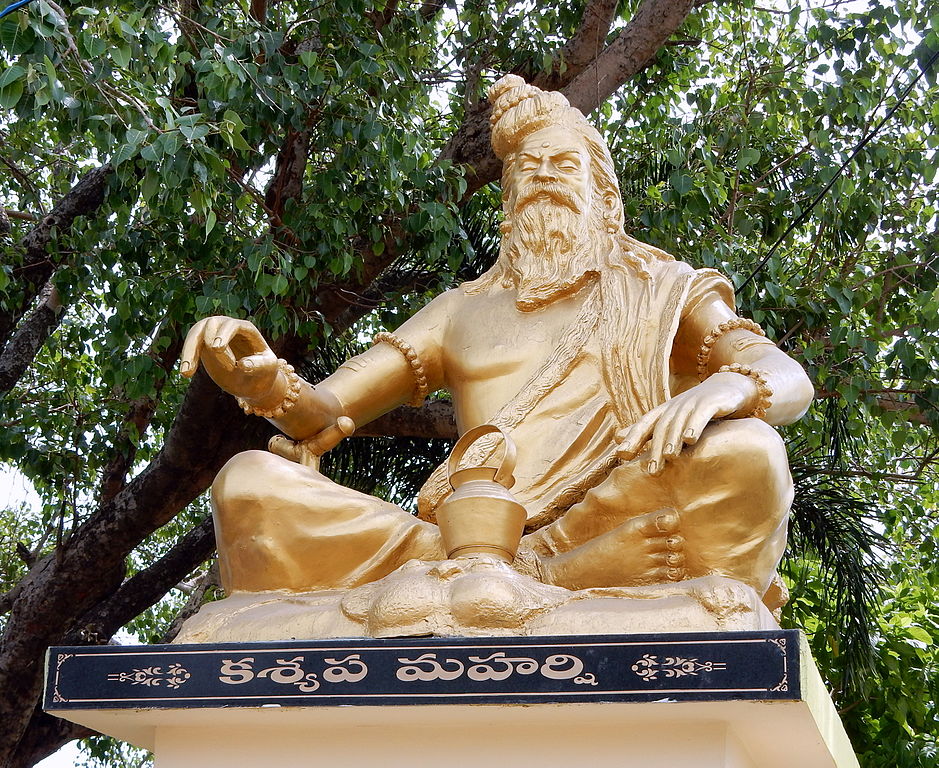
Table of Contents (The Complete Mahabharata in Simple English)
Previous Post: Garuda Wants to Eat Before Battling for the Amrit
| Note: In the previous post, we read about how Garuda ate the Nishadas to satisfy his hunger, and, as advised by Vinata, he did not hurt any brahmanas. In this post, we will read about Garuda’s interaction with his father. |
After eating the Nishadas, Garuda once again ascended the skies. This time, he saw his father, Sage Kasyapa, meditating on Gandhamadana mountain. Garuda flew towards his father.
The noble sage greeted his son and asked him some questions. Garuda’s answers pleased the sage and then he inquired about his son’s welfare.
“O child, is everything well with you? Do you get enough food everyday in the world of humans?”
Garuda replied, “My mother is well. My brother and I are also fine, but father, I don’t always obtain sufficient food. I am going to heaven to fetch the excellent amrit for the snakes to free my mother from bondage.”
Garuda continued, “I wanted to eat before seeking the amrit. Mother commanded me to eat the Nishadas. I ate thousands of them but my hunger is not yet satisfied. Therefore, O father, direct me to some other food so I may gain the strength to take the amrit by force from the beings of heaven.”
Kasyapa pointed to a lake and said, “This lake is sacred. It is well-known even in the heavens, but an elephant and a tortoise who are hostile toward each other have made this lake their home. Their constant hostility is disturbing the peace of the creatures that live in these sacred waters. Eat that elephant and tortoise to satisfy your hunger and proceed to get the amrit.”
“But before you go,” Sage Kasyapa added, “let me tell you the story of the elephant and, his older brother, the tortoise.”
| Note: In the next post, we will find out the identity of the elephant and the tortoise and why they were constantly fighting with each other. |
Table of Contents (The Complete Mahabharata in Simple English)
Next Post: Vibhavasu the Tortoise and Supritika the Elephant
